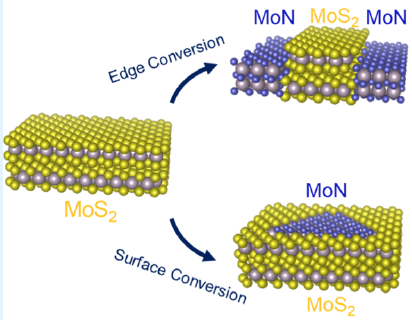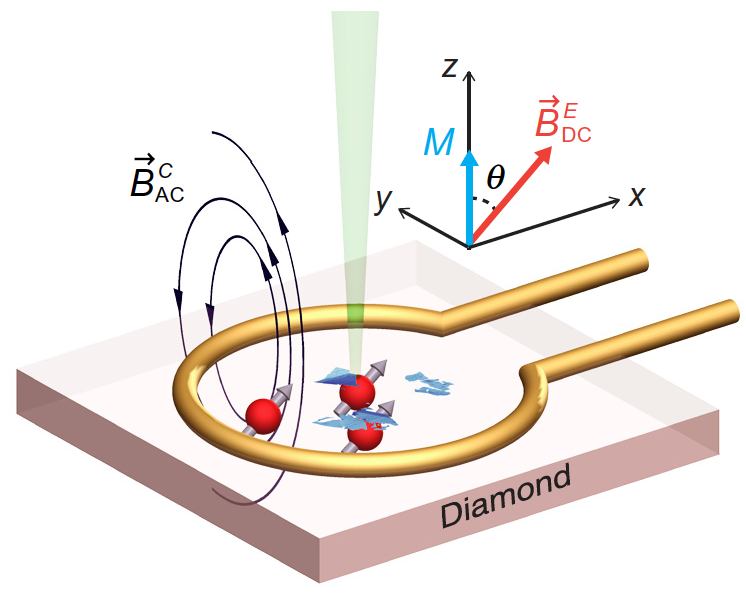Epitaxial Atomic Substitution for MoS2−MoN Heterostructure Synthesis
Integrating different two-dimensional (2D) crystals is highly demanded for advancing their application in next-generation electronics. 2D transition metal carbides, nitrides, and carbonitrides (MXenes), as new members in the 2D family, are promising candidates for 2D electrodes because of their high conductivity and stability. However, integrating MXenes with other 2D semiconductors has been underdeveloped due to the limitation of top-down etching synthesis of MXenes. Our recent development of atomic substitution synthesis achieved ultrathin non-van der Waals (non-vdW) transition metal nitrides (TMNs) through the conversion of vdW transition metal dichalcogenides (TMDs), opening opportunities of combining TMDs with TMNs via controllable partial conversion. Here, we perform an in-depth study of the atomic substitution process from semiconducting MoS2 to metallic MoN and realize both lateral and vertical MoN−MoS2 heterostructures via edge and surface epitaxial conversion, respectively. The structural evolution investigation from MoS2 to MoN using high-resolution transmission electron microscopy suggests atomically bonded interface for lateral heterostructures and moiré pattern in vertical heterostructures. Moreover, mask-assisted atomic substitution is applied to create patterned MoN−MoS2− MoN lateral heterostructures. Electrical measurements reveal a Schottky barrier height of meV for a three-layer MoS2−MoN interface, showcasing the potential of atomically bonded lateral heterostructures for MoS2 electronics with MoN as contact electrodes.




